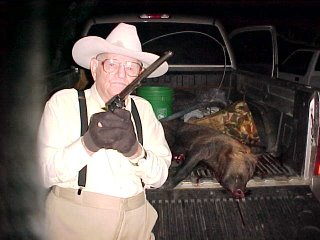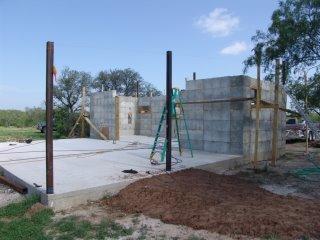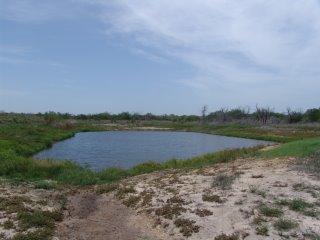William E. Robuck 1907-2004 William Everett Robuck, better known as “Cotton” forthe cotton-white hair he had from age 5, passed awayon Sunday, April 18, 2004. He was born on March 8, 1907, in Pilgrim, Texas. Cotton was the youngest son of the 11 children born toand adopted by Henry William Robuck and Willie(Thackston) Robuck. Cotton was the grandson of a TexasRanger, Rosco Robuck, and the son of one of the lastof the Chisholm Traildrivers, Henry. The Robuck family moved when Cotton was quite small toWilson County and lived in a house along the banks ofthe San Antonio River. Cotton received his educationin San Antonio and in Poth, where he and his sister,Margaret, drove a horse and buggy to school. Thefamily got their first Model-T in 1910 when Cotton was3 years old. The Robuck kids were a tough bunch andsome recalled that the Robucks were so tough that theschool playground was divided in half: half for theRobucks and half for all of the other kids. When hewas 16, Cotton, along with his friend, Isidore Toman,hopped a freight train and rode it to California tomake their fortunes prize fighting. That didn’t panout and after further travels to Chicago during thetime of Al Capone and making his way through the GreatDepression, Cotton later worked on the E.B. Poth Ranchin Atascosa County, where he met and married HelenSmith. After leaving the Poth ranch, he was employedby Brown and Root Construction Company and helped tobuild the Marshall Ford Dam, now known as MansfieldDam, on the Colorado River above Austin. In October1940, his wife, Helen, and their small son, Billy Ray,2, died in an automobile accident near Austin. Afterthis tragedy, Cotton returned to his ranchingactivities near Poth. It was during this time that Myrtie Ruth Svoboda movedto Poth after graduating from the University of Texasand accepting a teaching position in Poth. Cotton andMyrtie were set up on their first date by the Pothschool superintendent and were married on April 2,1942, in the Catholic rectory in Poth. Cotton andMyrtie had two children, Michael, born Oct. 8, 1946,and Rebecca, born March 10, 1948. They both attendedthe Poth schools where they were especially active insports. The children awarded their parents an A+ forattendance at their athletic events and Cotton wascredited with having attended every game in whicheither of them participated. The Robuck cattle enterprise flourished for severalyears with calves bringing four, six, and on rareoccasions, eight cents a pound. The seven-year droughtof the 1950s, during which Cotton burned 1,200 acresof prickly pear to feed the herd, finally forced themout of the cattle business. During these years, Myrtieattended classes on Saturdays and through the summers,commuting to San Marcos to earn her master’s degree ineducation for a much-needed raise in salary. Meanwhile, Cotton had built and started operating theCotton Club; a steakhouse where he hoped beef on theplate would be more lucrative then beef on the hoof.Finally, with his cattle disposed of, his activitiesturned to buying and selling pecans. It was said thathe was well acquainted with every pecan tree in everypecan orchard and river bottom in Wilson County and agreat many in Atascosa and Gonzales counties as well. In the 1970s, Cotton turned his talents to the antiquebusiness with his son, Michael. He refinished antiquefurniture and helped run the Robuck’s Antique Shop inPoth well into his 90s. Cotton’s life spanned almost 100 years and there is nodoubt that he lived every moment of his life to thefullest. Cotton never met a person, a pitch game, or apistol he didn’t like. As most of us knew him, heenjoyed hunting, fishing, dominoes, card playing,driving the area looking for wildlife and wildflowers,and telling stories about the good old days (althoughhe often commented that these are the good old days).Cotton also enjoyed frying up a good home-cooked mealof catfish or oysters followed by his homemade icecream or date nut candy for anyone who happened tovisit. A good meal like this shared with friends orfamily would prompt Cotton to comment that we wereeating like “millionaires.” Cotton and Myrtie werewell known throughout Wilson County for theirhospitality and friendship. Cotton was especially good with children and taughtmany how to hunt, shoot, drive, swim, and enjoy thebest out of life. As his hunting buddy Freddy Poth canattest, Cotton was a great pistol shot and one learnedfast not to bet against Cotton making shots with his.22 pistol. Cotton hunted with Freddy up untilrecently. This last November at age 96, he shot andkilled a wild hog weighing about 125 pounds with a .22pistol using long rifle shells. However, sometimesCotton wasn’t so lucky with his shots. On at least oneoccasion Cotton spied a buck while driving in his carand got so excited trying to get the shot off beforethe buck moved off that he forgot to roll the carwindow down. He laughed and recalled, “I pulled thetrigger and there was only a small hole at first, thenthe whole right window fell out as the buck ran off.” Cotton was preceded in death by his wife of 61 years,Myrtie Robuck, who passed away nine months ago on July9, 2003. He is survived by his son, Michael, andMichael’s 10 children: Jennifer, Shane, Lillian,Everett, Joseph Lewellyn (Joey), Ella, Seth, Sita,David, and Nicholas. Cotton is also survived by hisdaughter, Rebecca, her husband Don, and theirchildren, Aimee and Josh. Cotton has fourgreat-grandchildren: Athena, Michael, Ava, and Elysia,and is also survived by his sister-in-law, LillianSvoboda. Cotton touched the lives and hearts of so many, andlarger than life tales of Cotton Robuck will make uslaugh for years to come. We would like to share onesuch tale — a poem written by Cotton’s friends, Pauland Peggy Fuller from Tennessee, who wrote this poemin honor of Cotton’s 95th birthday celebration. COTTON He’s a Big man from TexasAnd once you have metIt’s not very likelyYou’ll ever forget. He wears a white StetsonThat’s tall and wideDark gloves on his handsAnd a crutch by his side. He’s famous in PothFor his card playing waysHe’s out to defeatWhomever he plays Be it stranger or friendOr even his kin.This man from TexasIs out to Win! We’ll never play cardsWith this man from PothAnd give him the chanceTo beat us both, But as this ode endsWe wish to impartWith his wit and his charmHe has won our heart!

 This was when we left Mr. "Cotton's" home on November 19, 2003 to go hunt hogs. Note the pistol stuffed in the right side of his pants. He has just earlier said when I asked, "Sure I can shoot one with my pistol". And he did....................
This was when we left Mr. "Cotton's" home on November 19, 2003 to go hunt hogs. Note the pistol stuffed in the right side of his pants. He has just earlier said when I asked, "Sure I can shoot one with my pistol". And he did....................
 Pictures are two pieces of a "metate", a flat usually sandstone piece of rock, which native Indians used to grind seeds in preparation for making some of their foods. I stumbeled on these a couple of weeks ago while out feeding deer. This usually marks a camp where other artifacts can be found. Lex and I have spent countless hours searching these sites for artifacts and have found some nice pieces. We started when we lived at the ranch and I then felt it would help teach him to look at where he stepped and avoid getting snake bit. After finding these pieces I told Lex that I would wait until he came to the ranch to check this site more closely.
Pictures are two pieces of a "metate", a flat usually sandstone piece of rock, which native Indians used to grind seeds in preparation for making some of their foods. I stumbeled on these a couple of weeks ago while out feeding deer. This usually marks a camp where other artifacts can be found. Lex and I have spent countless hours searching these sites for artifacts and have found some nice pieces. We started when we lived at the ranch and I then felt it would help teach him to look at where he stepped and avoid getting snake bit. After finding these pieces I told Lex that I would wait until he came to the ranch to check this site more closely.
 This evening we met Doris at the "Store" for one last look. Doris has sold the store to a family that will open a Mexican Restaurant. Being inside the shell of what it used to be made us all think of what all went on during the days the store was open for business. It was fun remembering all the fun times and experiences we had while inside this building.
This evening we met Doris at the "Store" for one last look. Doris has sold the store to a family that will open a Mexican Restaurant. Being inside the shell of what it used to be made us all think of what all went on during the days the store was open for business. It was fun remembering all the fun times and experiences we had while inside this building.




 I visited today with cousin Tom Poth. I got to see his cabin he is constructing on his ranch. It is really neat as you can see by looking at the attached pictures. The blocks are made of concrete and styrofome. They are 4'x16"x10" and after stacked are filled with concrete in the voids with horrizontal rebar laying between each course. The middle space will be screened in and the fartherest 1/3 will be covered but open. I think you will agree he has some great ideas here.
I visited today with cousin Tom Poth. I got to see his cabin he is constructing on his ranch. It is really neat as you can see by looking at the attached pictures. The blocks are made of concrete and styrofome. They are 4'x16"x10" and after stacked are filled with concrete in the voids with horrizontal rebar laying between each course. The middle space will be screened in and the fartherest 1/3 will be covered but open. I think you will agree he has some great ideas here.





 Water is critical for all wildlife. The more water you have the more wildlife. With recent rains the grass is green and growing again. The rainfall wasn't enough to run much water and thus the ponds continue to shrink. I thinks our next best chance will come in the form of some kind of tropical disturbance from the Gulf of Mexico.
Water is critical for all wildlife. The more water you have the more wildlife. With recent rains the grass is green and growing again. The rainfall wasn't enough to run much water and thus the ponds continue to shrink. I thinks our next best chance will come in the form of some kind of tropical disturbance from the Gulf of Mexico.  The deer on the right is "Klint". He is with his buddy who is another deer of Sam's that has yet to be named.
The deer on the right is "Klint". He is with his buddy who is another deer of Sam's that has yet to be named. I was walking down a fenceline to take pictures of a snake that was crossing when Sam called to me and had me look to my right. Just then these two stepped out.
I was walking down a fenceline to take pictures of a snake that was crossing when Sam called to me and had me look to my right. Just then these two stepped out. Last year when this deer was rubbing his "velvet" off his antlers he got into some round bale twine and had it all tangeled and caught up in his antlers. Well, the more he rubbed his antlers on the brush the more the twine frayed and made him look like he had an "Afro". He was some sight. He finally got rid of it but while it was tangeled most of the other deer wanted nothing to do with him.
Last year when this deer was rubbing his "velvet" off his antlers he got into some round bale twine and had it all tangeled and caught up in his antlers. Well, the more he rubbed his antlers on the brush the more the twine frayed and made him look like he had an "Afro". He was some sight. He finally got rid of it but while it was tangeled most of the other deer wanted nothing to do with him. Give us some suggestions for nameing this deer.
Give us some suggestions for nameing this deer. What is that smell?.........
What is that smell?.........